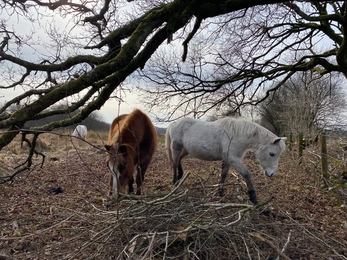Boosting Black Bog Ant Numbers at Cors Goch
Following recommendation from an ecological report work has been carried out at Cors Goch to improve the habitat for Black Bog Ants. They are one of our rarest species of ants, with a very localised distribution. There are only 3 known populations in Wales: in the Gwaun Valley in Pembrokeshire, Rhossilli Down on Gower and at Cors Goch, our lowland raised bog near Carmarthen. It is important that we do our best to safeguard this rare species and work to improve the habitat to encourage them to extend their range on site.
The report assessed population size, distribution and extent across the bog. It compared survey data from 2024 with historical data to gauge how the population was faring. The report showed that the population was within the limits of what was expected, with 150 nests across the site. However, some of the areas where bog ants had been found previously had become degraded through lack of management. It was also noted that the highest concentration of ants were found along a mown strip of vegetation, where the vegetation was less uniform and more diverse.
As such, work was carried out over winter to create more of the ant's preferred habitat. A number of narrow strips have been mowed to break up the sward. The area identified as having lost it’s attractiveness for Black Bog Ants has been fenced. We aim to get ponies on the managed parts of reserve next year to maintain the habitat works that have been carried out.




